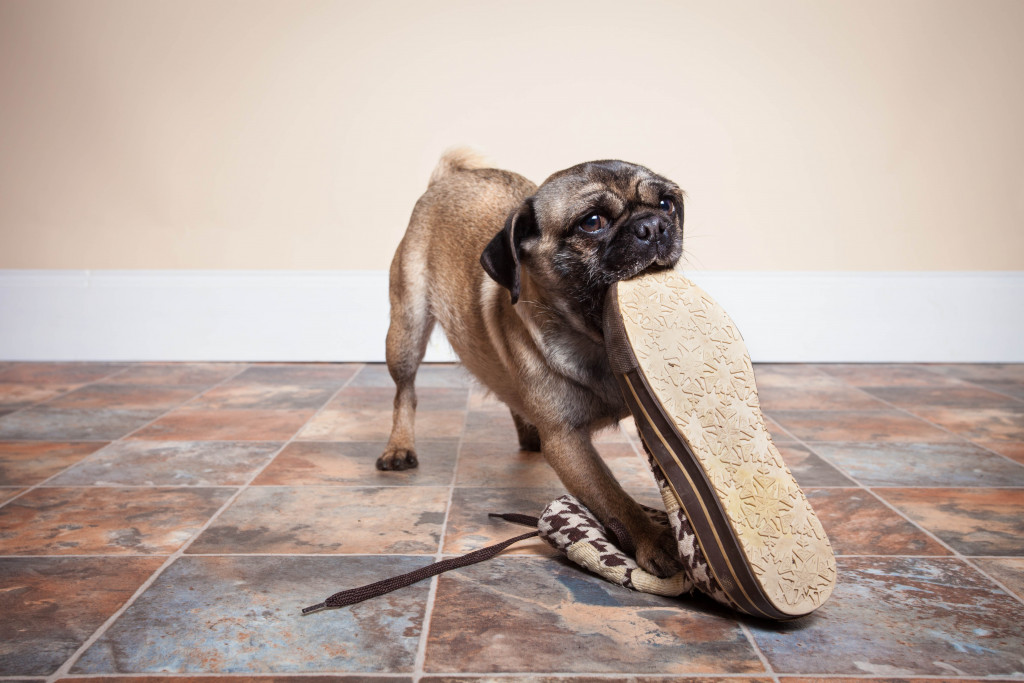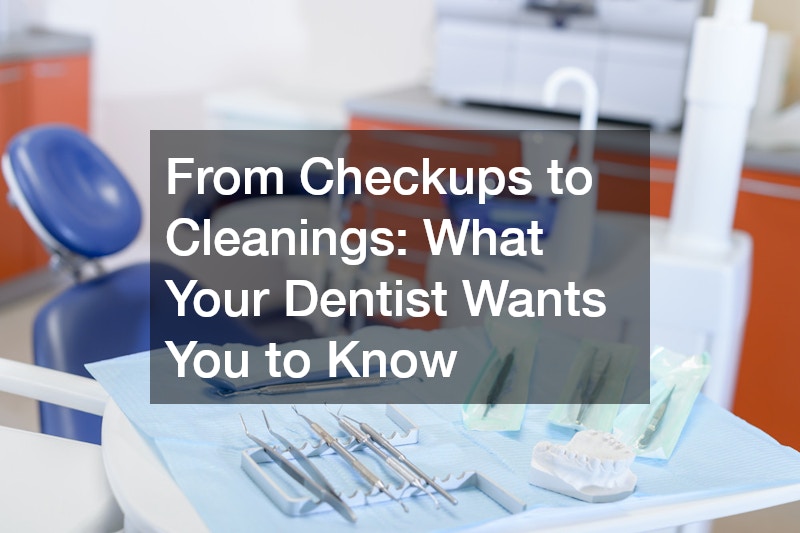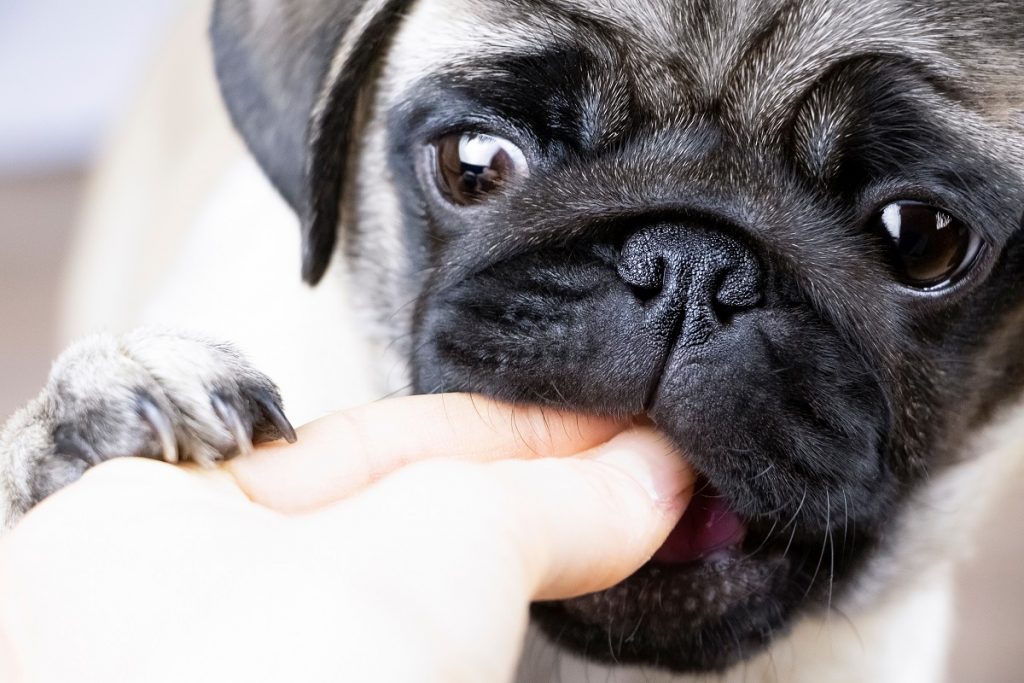• Chewing is a normal behavior for dogs, but it needs to be monitored closely.
• Providing toys, activities, and pup-safe treats can help reduce boredom and stress.
• Consider underlying health issues if excessive chewing habits have developed suddenly. Your vet can help diagnose any medical issues.
• Move any items out of reach or pet-proof the area to make it less appealing to your pup.
It can be difficult for pet owners to know when a dog’s eating and gnawing habits are becoming destructive. Chewing is normal for most dogs, but it can be quite concerning if your pup has taken it too far and is tearing up furniture, books, or other items around the house. But don’t worry—you can use plenty of strategies to help redirect your pup’s behavior and get them back on track.
Understanding Chewing Behaviors in Dogs
Chewing helps clean dogs’ teeth, so it’s important to recognize that chewing itself isn’t necessarily bad. It just needs to be monitored closely. Dogs tend to chew when bored or anxious, so providing plenty of toys and activities throughout the day can help reduce those feelings of boredom or stress. Additionally, offering puppy-safe treats like rawhide chews or bones can provide an acceptable outlet for their natural chewing tendencies.
Dog’s Chewing and Their Health
It’s also important to consider if any underlying health issues could be causing your dog to chew excessively. If you haven’t noticed these signs before, it could be a sign of an underlying health problem. Your vet can help you determine if any medical issues need to be addressed and recommend treatment options.
Chewing on Furniture or Other Household Items
Chewing on furniture could mean your pup is simply trying to get your attention. Ensure you provide plenty of positive reinforcement when they chew on their toys and ignore the destructive chewing behaviors.
What to Do: If your pup keeps returning to the same item, try using a bitter-tasting spray or other deterrents like an indoor ultrasonic bark control device to help redirect them away from it. You can also try “trade-up” games, where you trade an appropriate chew toy for the furniture item your pup is trying to chew on.
You may also need to overhaul your home environment. Move any furniture, books, or other items you don’t want your pup to chew on out of their reach or make them less appealing by covering them with a blanket or pet-proofing the area.

Eating and Swallowing Concrete
This is not a common habit that’s why it is easy to spot. Eating concrete is not just a nuisance. It can also be dangerous for your pup. Your pup’s craving for concrete could be due to a deficiency in minerals such as calcium and iron. Alternatively, medical issues like diabetes, anemia, or thyroid disease may also be causing him to devour things that are not food. Remember this when investigating the underlying cause of his odd behavior!
What to Do: Ensure you provide a balanced diet that meets your pup’s nutritional needs. You may also need to bring your dog to the vet when you suspect that they have ingested concrete because too much concrete can cause blockages in the gastrointestinal tract.
Additionally, if it caused your house’s concrete to be damaged, you may consider a concrete restoration service to help repair it. The service also includes sealing and polishing the concrete to look new. Once the concrete structure has been restored, you can use pet-proofing tactics such as fencing and other barriers around concrete surfaces to help protect your pup from further damage.
Redirecting Destructive Chewing Behaviors
If your pup has already started displaying signs of destructive chewing behaviors, there are still several things you can do to address it. First and foremost, ensure that any items you don’t want to be destroyed are always kept out of reach from your pup. If you catch them chewing on something they shouldn’t have access to, make sure you redirect their focus with a toy or treat them immediately. This will help them understand that these items aren’t meant for them and hopefully prevent further destruction in the future.

Consider using a crate or specific place in the home for your pup when you’re away, where they will feel secure and not overwhelmed by their environment. This can reduce stress levels and encourage positive behaviors instead of destructive ones.
Finally, if the issue persists despite all your attempts at redirection and prevention, it may be time to consult a professional such as a veterinary behaviorist, who can work with you directly on further corrective steps that should be taken with your pup.
By taking the time to understand your dog’s behavior, providing them with plenty of mental stimulation and appropriate outlets for their chewing habits, and implementing some simple preventative tactics, you can help redirect destructive behaviors. With patience and guidance, you can get your pup back on track in no time!




